Fallen leaves meet rake
Do you have large trees in your yard? Do you have a large number of not-so-large trees? Does your house sit in the middle of what may be considered by many to be a forest? Do you live in a temperate (not tropical) climate? Then you're familiar with this scene at this time of year (unless you live in the southern hemisphere, in which case you have 5-6 months before you see it again):
I don't live in a forest, nor do I have 100-year-old oaks or other huge trees towering over my yard, but even a medium-sized tree can drop a lot of leaves. I usually wait until all of the leaves have fallen, then start my cleanup -- unlike some of my neighbors who started picking up leaves a month ago. Here's how I make this oft-maligned task a bit easier on myself.
The two trees in my front yard are leafless now.
I'm not really sure what happens to the leaves from that ash tree, but there never seems to be too many on the ground. Maybe since they're smaller leaves I don't notice them after the sugar maple leaves drop:
The only wrinkle in my "wait until all leaves have fallen" approach is my neighbor's pin oak (seen at the right edge of the photo above):
It will be dropping leaves for quite a while, possibly all though the winter depending on its severity. So that usually means more raking for me in the spring.
Here's what I have to deal with in the front yard (the only part of my yard that I really care about raking):
Before I start cleaning this up, I want to discuss the options available for leaf cleanup in general.
First, if you don't have a good-sized compost pile or a forested area in or near your yard, and your city doesn't provide leaf-vacuuming service (there are some that do), then you really have only two choices: 1) use your lawn mower to chop the leaves into tiny bits and leave them on your lawn, or 2) bag them. (There are some other choices like "rake into planting beds as mulch", or "do nothing", but I'm assuming here that the goal is to remove all of the leaves.)
Option 1 (mowing) doesn't remove all evidence of the leaves, even if you have a mulching mower. Although the leaves are now in tiny pieces, there are a lot more of these tiny pieces now, and they will take a little while to break down. Sometimes it takes more than one pass with the mower too, so it can be like mowing your lawn twice in a row. Nevertheless this can be a good option, especially if your lawn needs one last mowing anyway.
Option 2 is to bag the leaves. There are really no shortcuts that I know of for this -- just get the leaves into piles (via raking or blowing), then jam them into bags, over and over again. This is not a fun job if you have no helpers.
If you do have a large compost pile or wooded area where you can dump your leaves like I do, you have another option: tarping. I don't know if that's an official term, but it fits. I'll describe this simple process shortly, but first, a short editorial:
Leaf blowers, I hate you.
That said, here are the tools I'll be using:
That's a rake and a basic poly tarp which I think is 8' x 10'.
The idea is to rake the leaves into piles, lay the tarp next to a pile, then rake the pile onto the tarp.
I use an old rubber mat to hold down the edge of the tarp, but it's not necessary.
I guess you could simplify this process by just clearing a space for the tarp, then raking the leaves directly onto the tarp (avoiding the pile step), but for some reason it just seems "right" to rake leaves into a big pile first. Maybe that comes from making leaf forts with my siblings and friends every autumn as children, or maybe there is some instinctual force compelling us to pile up leaves... after all, a large leaf pile can be used for shelter from the cold. (We had a stray cat spend the winter in a hole in a leaf pile a couple of years ago.)
Once the tarp is full, you gather up the corners:
and carry the tarp to the dumping area. Usually this would be my compost pile:
But today I'm going to be mulching some of my bamboo divisions with it:
These are from my Yellow Groove removal, and are just "heeled in" here in some compost. I'd like them to survive, but I'm not too concerned about what might happen to them this winter. I'll be protecting other bamboos in different ways, but these are just getting a thick layer of leaves. This may invite mice and voles to nest here for the winter and they may eat the bamboo rhizomes, but as I said I'm not too concerned about these specific plants.
There, nice and warm. I really should have watered them before mulching, but it's too late now.
The tarping method allows you to move large amounts of leaves quite quickly, but it can be difficult if you have a long way to walk to the dumping area, or if the leaves are wet. These leaves today are very dry and "fluffy", so each tarp load is quite light. If the leaves had been wet, I wouldn't have filled the tarp as much. Wet leaves break down really fast in the compost pile, but carrying them can be a lot of work.
So after a few tarp loads, the front yard is clear of leaves:
Well, half-clear. If weather permits I like to stretch the leaf raking task over two or more days. Doing it all in one day makes it a lot less fun, so I'll work on it until I get bored or tired, then come back the next day to finish.
Besides, I'll never be able to get every single leaf off of my lawn, so I don't obsess over it.
Unlike my neighbor with his at-least-once-a-day leaf-blowing...

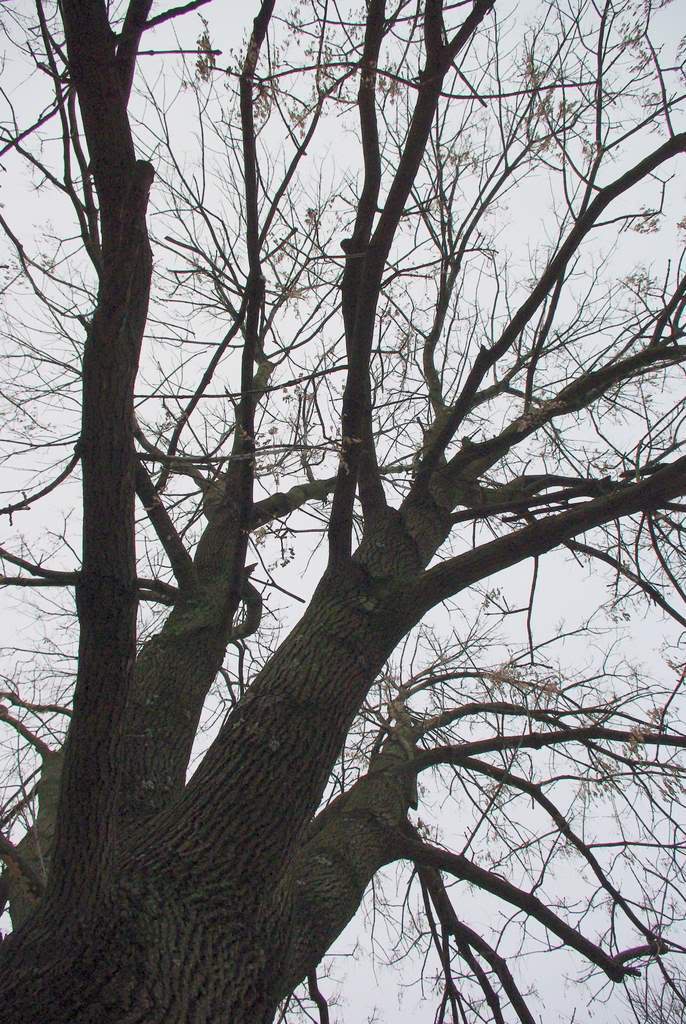
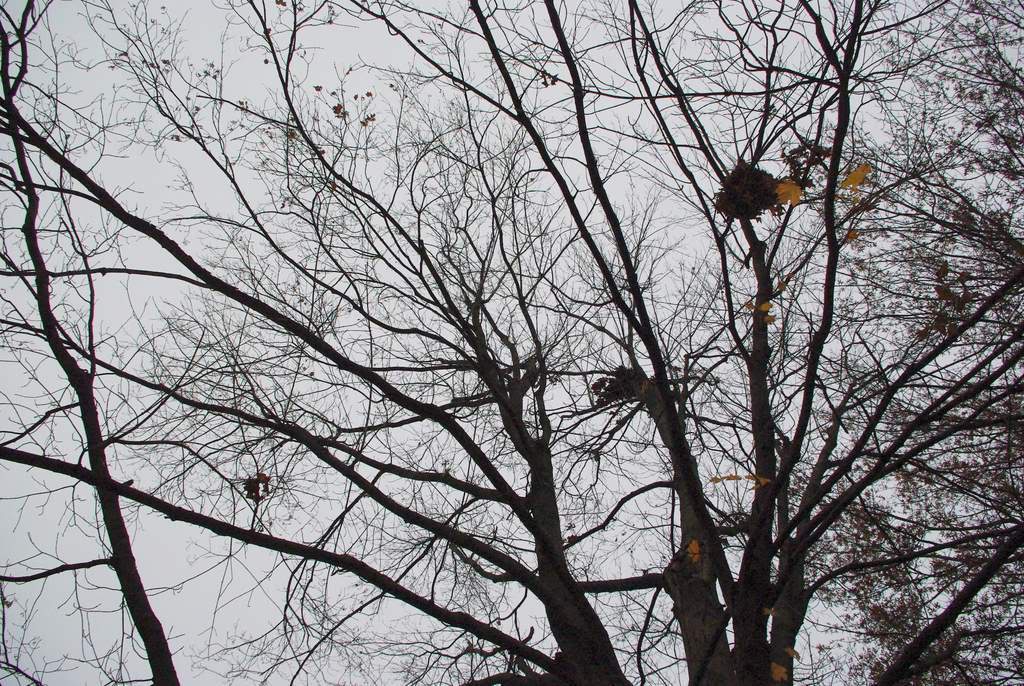
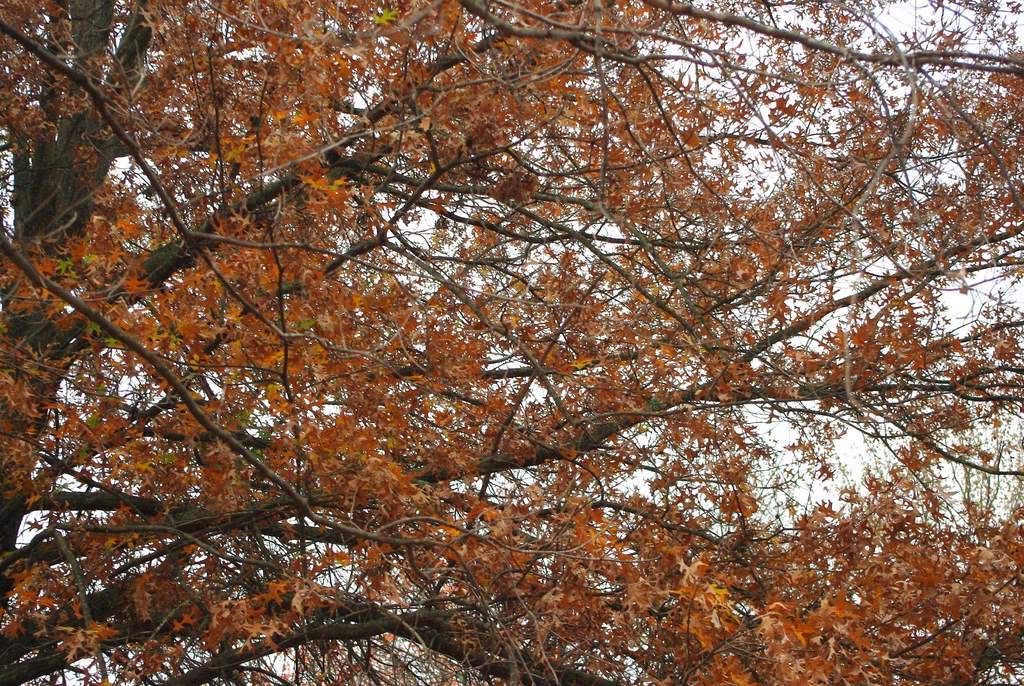
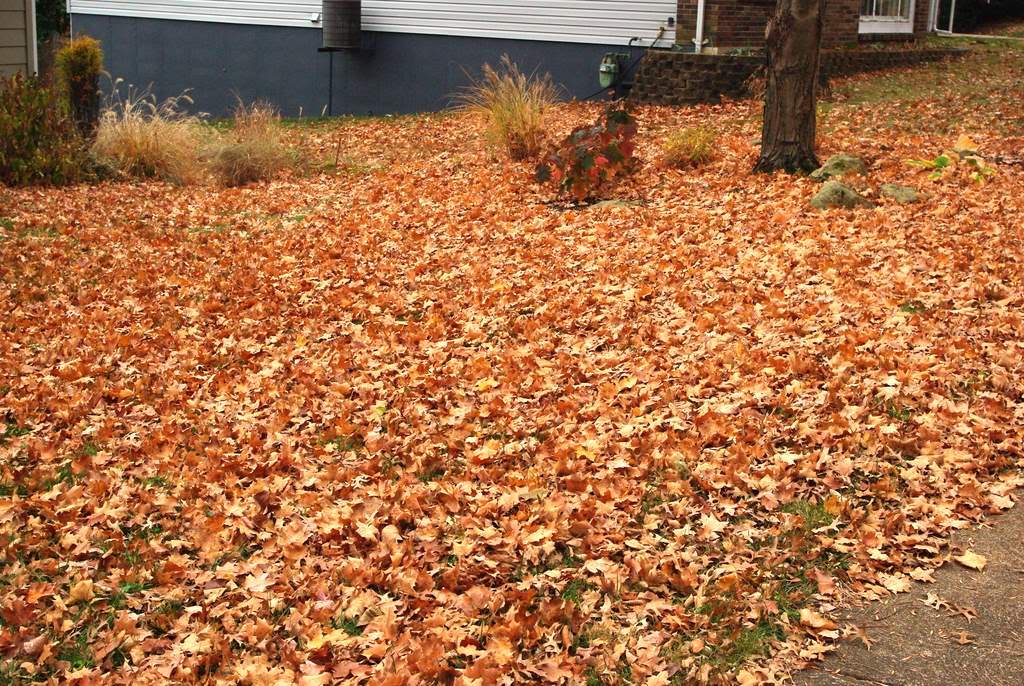
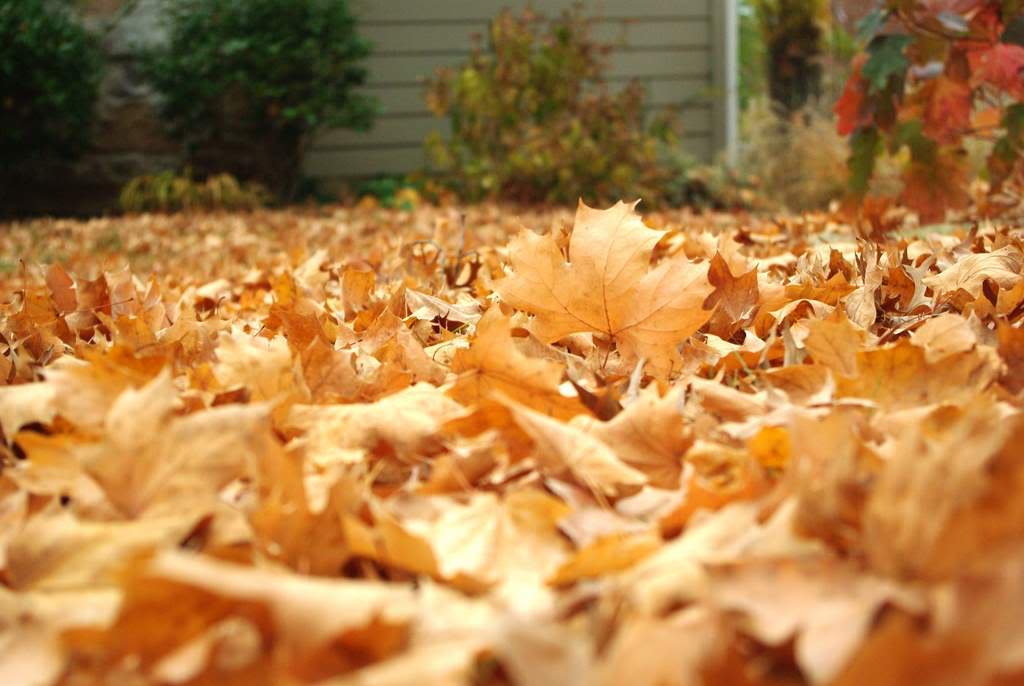
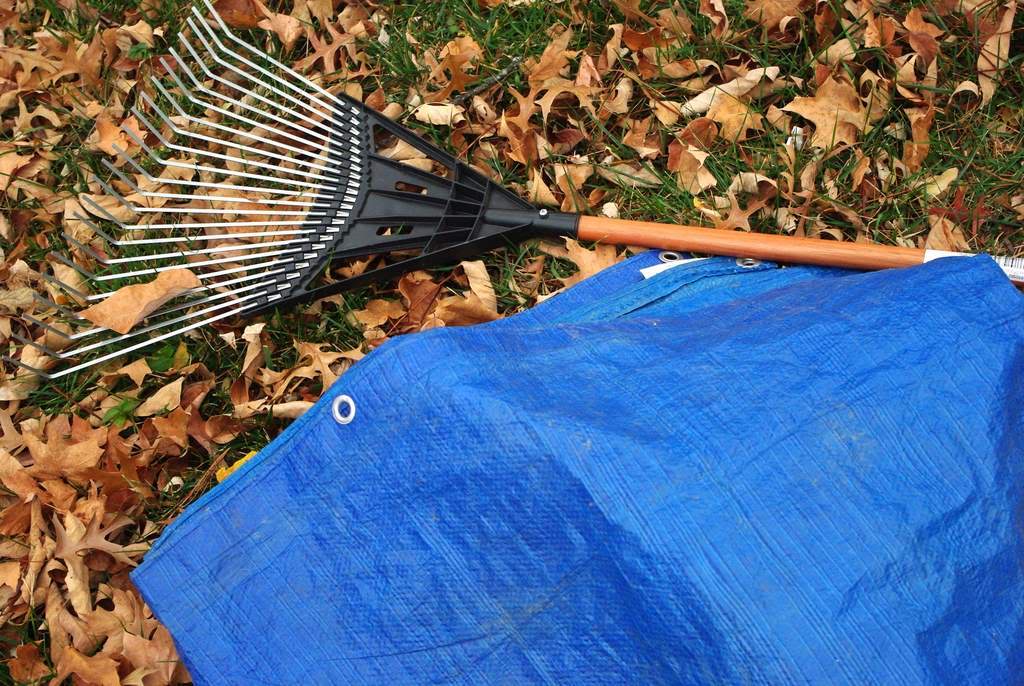
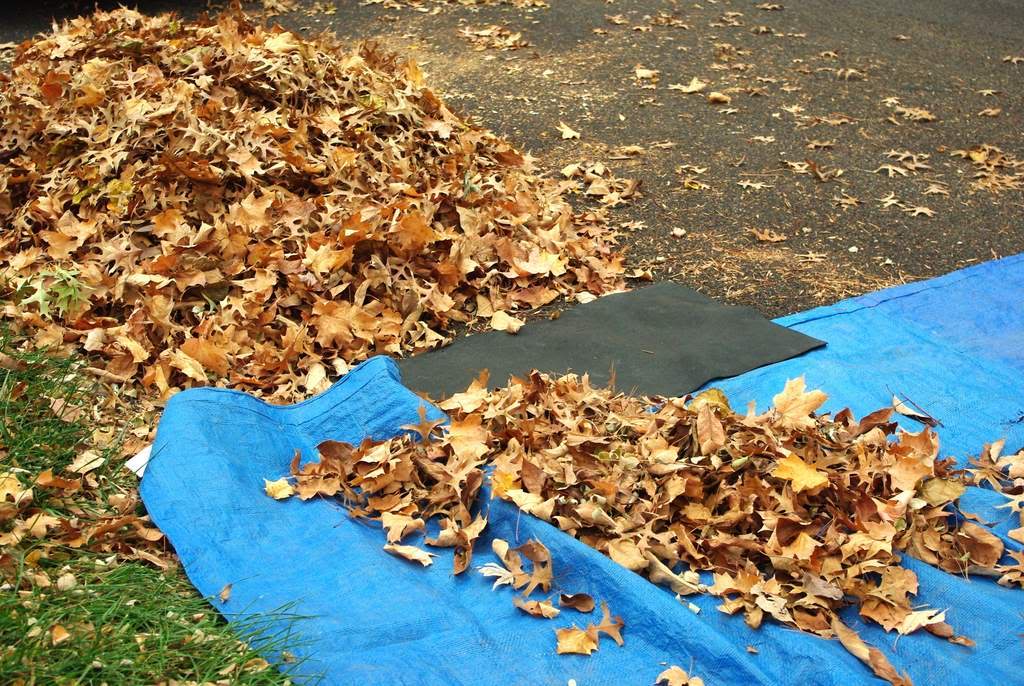
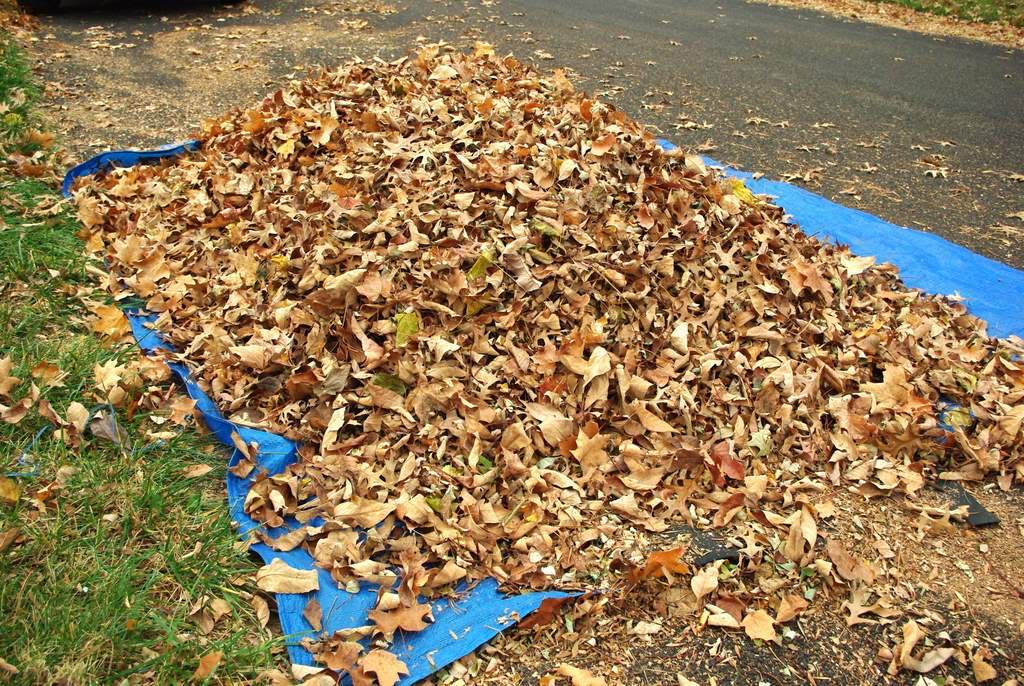
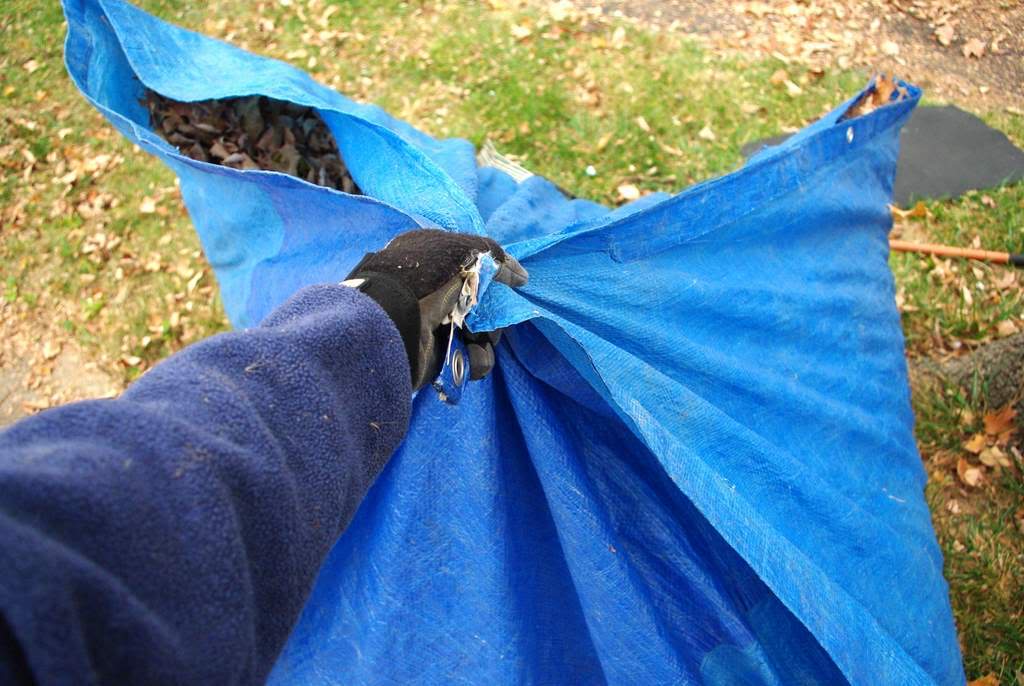
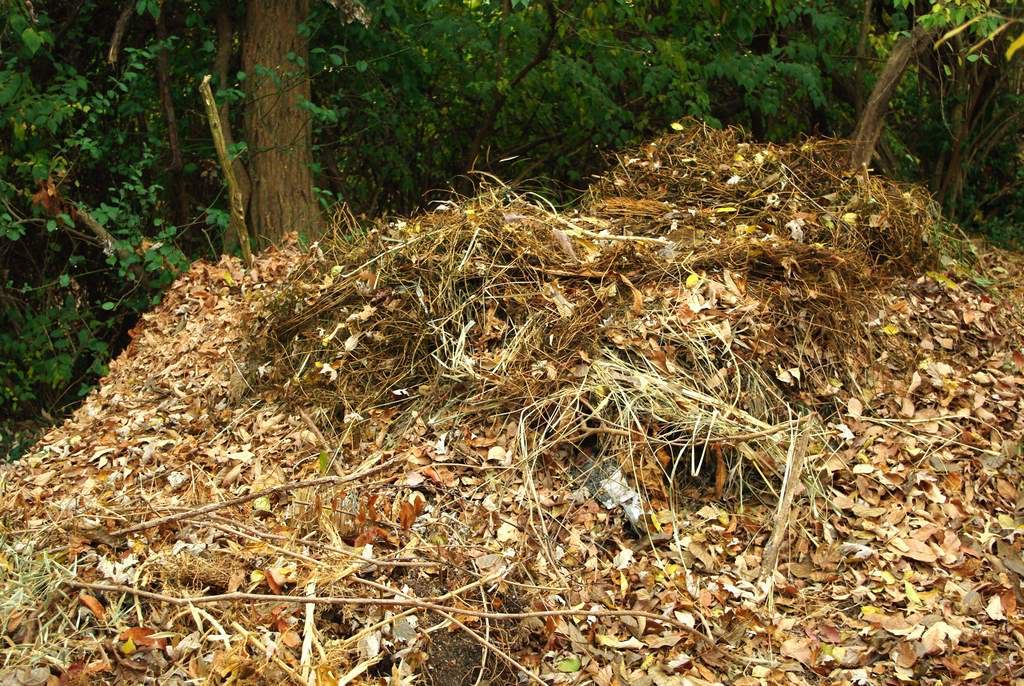
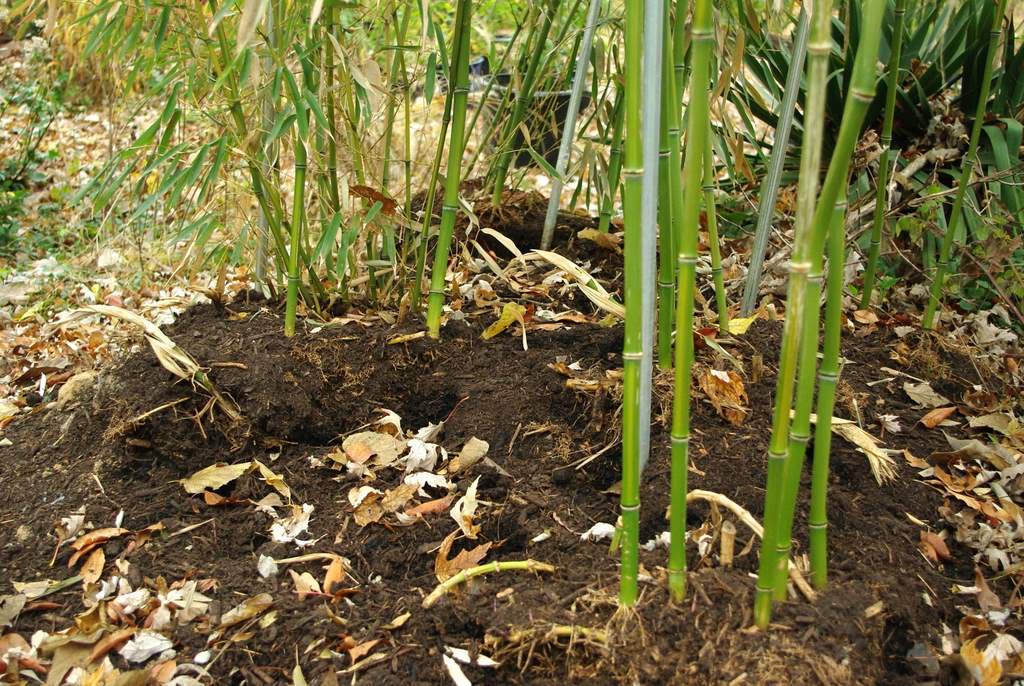
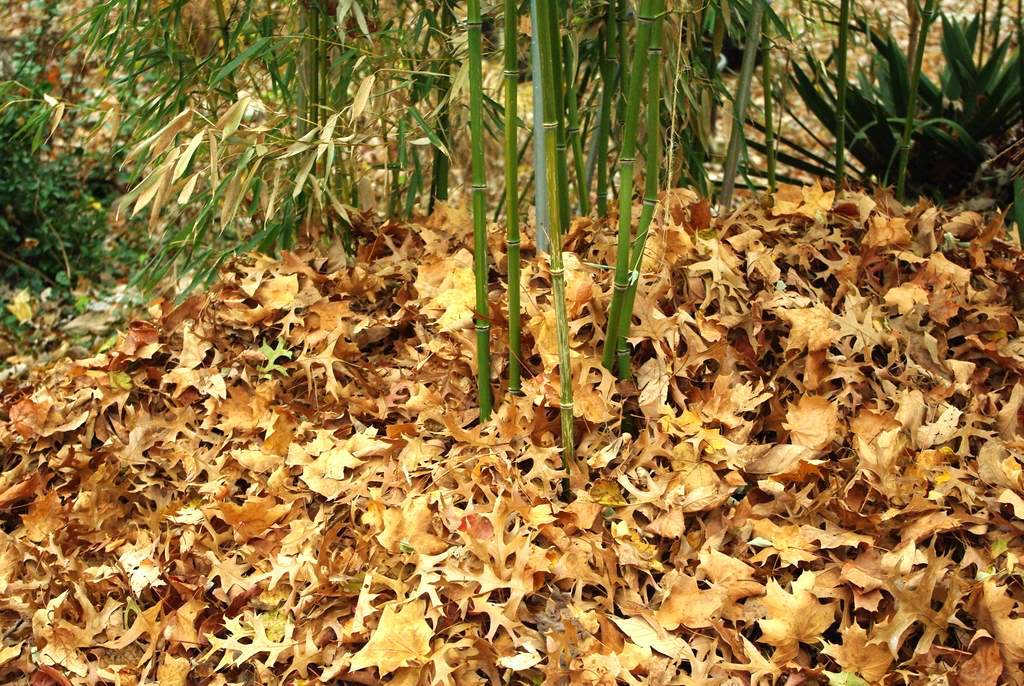
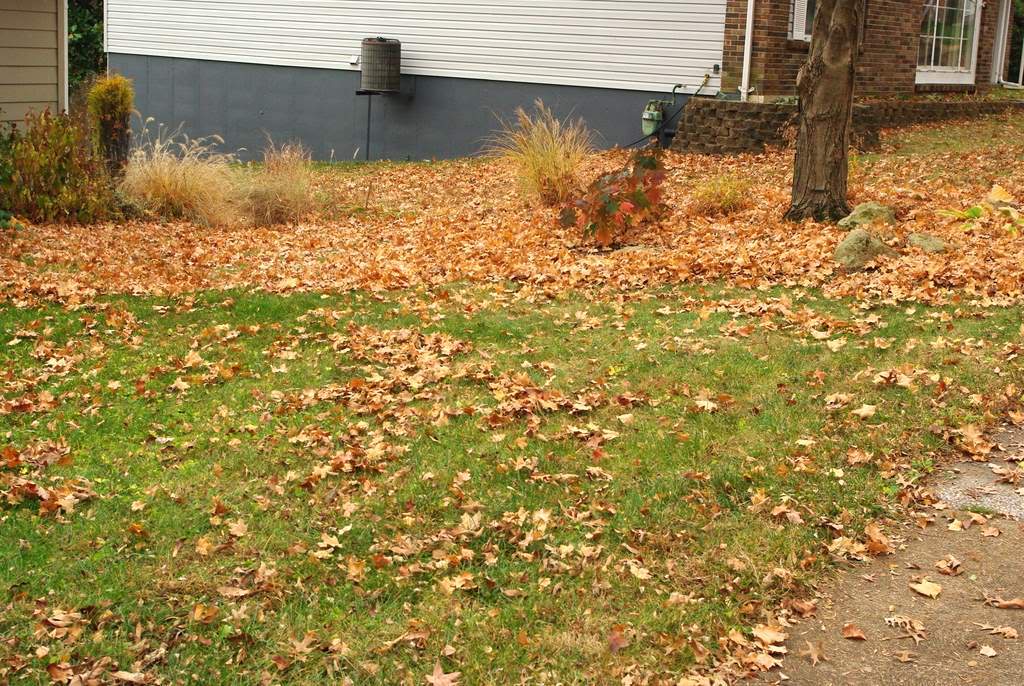




Alan, I can't tell you how much I hate leaf blowers. The other morning when we were working on our bamboo stock tanks there were three leaf blowers going at the same time. Mind you, around here leaf blowers are used year round to get rid of every little bit of grass or dirt. Broom manufacturers must really be suffering!
Agree heartily - leaf blowers are such a waste of energy and cause such disturbance to the wildlife and us neighbors to their owners/users